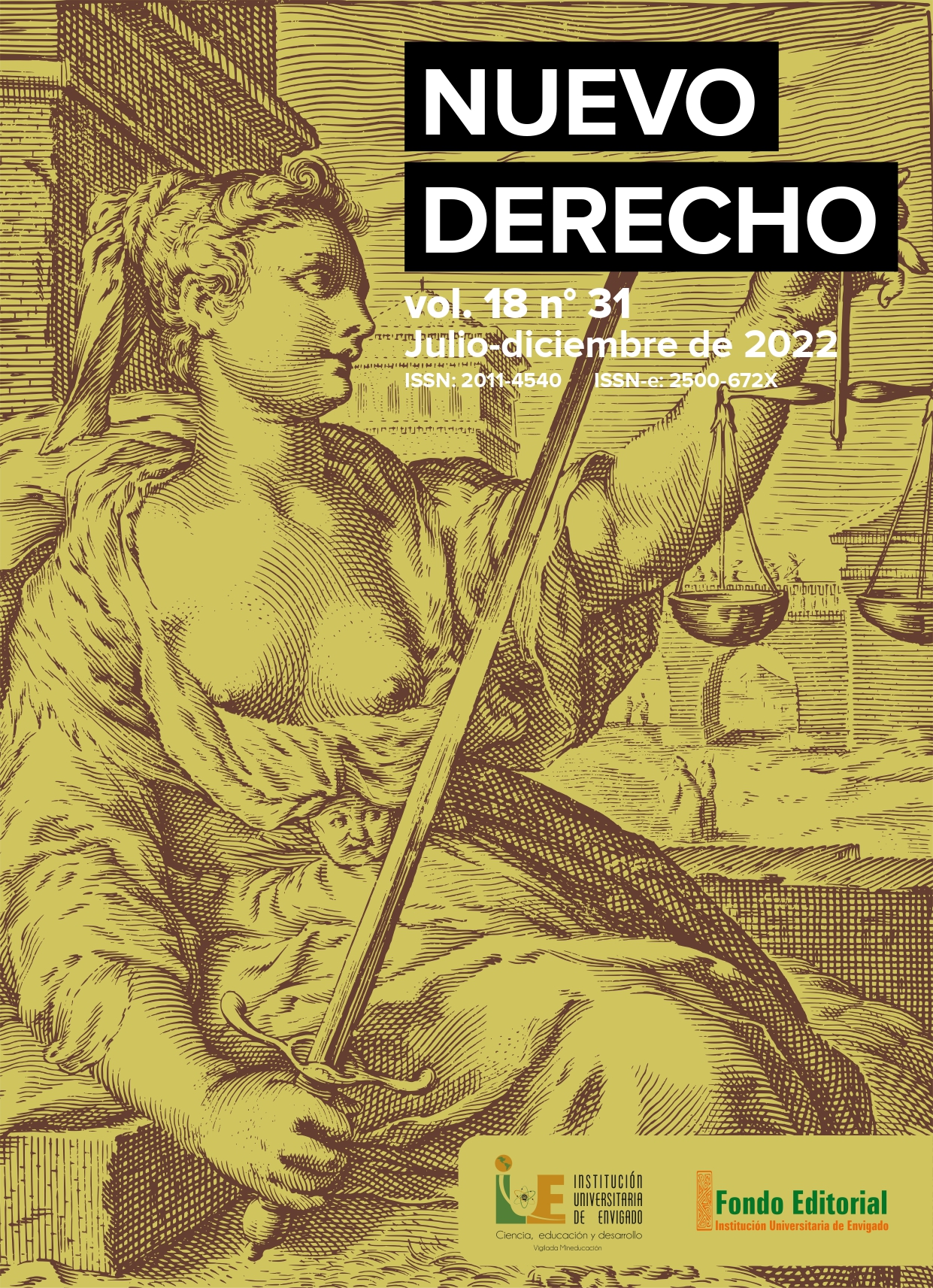El derecho a la verdad en el Sistema Integral de Verdad, Justicia, Reparación y No Repetición en Colombia: una aproximación a la relación intrínseca entre sus mecanismos y objetivos
DOI:
https://doi.org/10.25057/2500672X.1462Palabras clave:
Derecho a la verdad, justicia transicional, Derechos Humanos, Sistema Integral de Verdad, Justicia, Reparación y No RepeticiónResumen
La firma del Acuerdo de Paz entre el Gobierno colombiano y las Fuerzas Armadas Revolucionarias de Colombia-Ejército del Pueblo estableció el Sistema Integral de Verdad, Justicia, Reparación y No Repetición, compuesto por la Comisión para el Esclarecimiento de la Verdad, la Convivencia y la No Repetición, la Jurisdicción Especial para la Paz y la Unidad de Búsqueda de las Personas dadas por Desaparecidas. Estos mecanismos garantizan los derechos a la verdad, la justicia, reparación y medidas de no repetición, tal como fue estipulado en el Acuerdo Final para la Terminación del Conflicto Armado y la Construcción de una Paz Estable y Duradera. Uno de sus componentes más críticos e imperativos es el derecho a la verdad para las víctimas de violaciones graves a los derechos humanos y sus familias. Este derecho, primariamente concebido como un derecho humano, coexiste con los tres pilares adicionales de la justicia transicional, interactuando y complementándolos.
Este artículo busca definir el contenido del derecho a la verdad en los tres organismos que componen el Sistema Integral, para concluir que, aunque cada mecanismo persigue un tipo diferente de verdad, existe un vínculo de complementariedad entre ellos, abordando los derechos de las víctimas y sus necesidades, y estructurando una memoria colectiva sobre el conflicto armado colombiano.
Biografía del autor/a
Laura Chaparro, Friedrich Alexander Universität Erlangen-Nürnberg. Germany
PhD, MA in Human Rights
Email: laura.chaparro@fau.de
Referencias bibliográficas
ABColombia. (2013). Colombia; Women, Conflict-Related Sexual Violence, and the Peace Process. https://www.peacewomen.org/assets/file/abcolombia_conflict_related_sexual_violence_report.pdf
Advocacy for Human Rights in the Americas. (2020). A Review of How Colombia's Truth Commission is Advancing. https://colombiapeace.org/advancing-truth-commission/
Biggar, N. (2003). Making Peace or Doing Justice: Must We Choose? In N. Biggar (editor), Burying the Past: Making Peace and Doing Justice After Civil Conflict (pp. 3-24). Georgetown University Press.
Comisión Colombiana de Juristas. (2006). Verdad, justicia y reparación: algunas preguntas y respuestas. https://www.coljuristas.org/documentos/libros_e_informes/verdad_justicia_y_reparacion.pdf
Comisión Colombiana de Juristas. (2018). Guía 2. La satisfacción de los derechos de las víctimas: el reto de la JEP y sus comparecientes. https://www.jep.gov.co/Sala-de-Prensa/Documents/guia_02%20SATISFACCION%20DE%20LOS%20DERECHOS%20DE%20LAS%20VICTIMAS%20JEP.pdf
Comisión de la Verdad. (2018). Lineamientos metodológicos. Escuchar, reconocer, y comprender para transformar. https://comisiondelaverdad.co/images/zoo/publicaciones/archivos/comision-verdad-lineamientos-metodologicos-2019-01-18.pdf
Commission for the Clarification of Truth, Coexistence, and Non-repetition. (2018). 21 Key points to learn about the Truth Commission. Communications office for the Truth Commission. https://comisionverdadcol-eu.org/wp-content/uploads/2020/05/21-keys-comision-verdad-english-version.pdf
Corte Constitucional de Colombia. (2019). Sentencia C588/19. M. P. José Fernando Reyes Cuartas. Bogotá: Corte Constitucional.
Giraldo Muñoz, M.; Serralvo, J. (2019). International Humanitarian Law in Colombia: Going a Step Beyond. International Review of the Red Cross 101(912), 1117-1147. https://international-review.icrc.org/articles/international-humanitarian-law-colombia-going-step-beyond-ir912
Guáqueta, A. (2007). The Way Back In: Reintegrating Illegal Armed Groups in Colombia Then and Now. Conflict, Security and Development, 7(3), 417-456. https://www.ideaspaz.org/new_site/secciones/publicaciones/download_boletines/the_way_back.pdf
Inter-American Commission on Human Rights. (1999). Report No. 1/99. Case 10.480. Lucio Parada Cea, Héctor Joaquín Miranda Marroquín, Fausto García Funes, Andrés Hernández Carpio, Jose Catalino Meléndez and Carlos Antonio Martínez vs. El Salvador. http://cidh.org/annualrep/98eng/Merits/ElSalvador%2010480.htm
Inter-American Commission on Human Rights. (2014). The Right to the Truth in the Americas. http://www.oas.org/en/iachr/reports/pdfs/right-to-truth-en.pdf
International Center for Transitional Justice. (2009). What is transitional justice. https://www.ictj.org/sites/default/files/ICTJ-Global-Transitional-Justice-2009-English.pdf
International Commission of Jurists. (2019). Colombia: The Special Jurisdiction for Peace, Analysis One Year and a Half after its Entry into Operation. Geneva. https://www.icj.org/wp-content/uploads/2020/05/Colombia-Jurisd-para-la-paz-PUBLICATIONS-Reports-Fact-finding-mission-report-2019-ENG.pdf
Marín López, D.; Romero Cristancho, C. (2019). Sistema Integral de Verdad, Justicia, Reparación y no Repetición. Conceptos clave para su mandato. Dejusticia. https://www.dejusticia.org/publication/conceptos-clave-para-el-sivjrnp/
Micus, A. (2015). The Inter-American Human Rights System as a Safeguard for Justice in National Transitions. From Amnesty Laws to Accountability in Argentina, Chile and Peru. Brill.
Olásolo, H. (2018). International Criminal Law, Transnational Criminal Organizations and Transitional Justice. Brill.
Quiñones, K.; Cabello Tijerina, P.; Vicuña de la Rosa, M.; Quiñones Londoño, W. N. (2020). Strategies for Territorial Peace: The Overcoming of the Structural Violence in Women Living in Palmira, Colombia. Social Sciences, 9(11), 1-13. https://doi.org/10.3390/socsci9110211
Rojas Orozco, C. (2021). International Law and Transition to Peace in Colombia. Assessing Jus Post Bellum in Practice. Brill. https://doi.org/10.1163/9789004440531
Saffon Sanín, M. P.; Tacha Gutiérrez, V. (2019). La participación en las medidas de justicia transicional. Un estudio comparado. Dejusticia. https://www.dejusticia.org/publication/la-participacion-en-las-medidas-de-justicia-transicional/
Sandoval Amador, D.; Andrea, M. G.; Tulena Salom, J.; Triana González, P. (2009). Justicia transicional: su contenido y significado. Una breve aproximación al caso colombiano. Cuadernos de Derecho Penal. (2), 37-78. https://doi.org/10.22518/20271743.364
Secretary General of the United Nations. (2010). Guidance Note of the Secretary General. United Nations Approach to Transitional Justice. United Nations. https://www.un.org/ruleoflaw/files/TJ_Guidance_Note_March_2010FINAL.pdf
Scovazzi, T.; Citroni, G. (2007). The Struggle against Enforced Disappearance and the 2007 United Nations Convention. Brill.
Special Jurisdiction for Peace. (2019). Comprehensive System of Truth, Justice, Reparation and Non-Repetition (SIVJRNR). https://www.jep.gov.co/Infografas/SIVJRNR_EN.pdf
Special Jurisdiction for Peace. (2020). Manual de Participación de las Víctimas https://www.jep.gov.co/Infografas/participacion/manualparticipacion.pdf
Sullo, P. (2018). Beyond Genocide: Transitional Justice and Gacaca Courts in Rwanda. The Search of truth, Justice and Reconciliation. Springer.
Summers, J.; Gough, A. (2008). Non-State Actors and International Obligations. Brill.
Sweeney, J. (2018). The Elusive Right to the Truth in Transitional Justice Human Rights Jurisprudence. British Institute of International and Comparative Law, 67 (2) 353-387. https://doi.org/10.1017/S0020589317000586
Teitel, R. G. (2000). Transitional Justice. Oxford University Press.
Unit for the Search of Persons Presumed Disappeared in the context and because of the armed conflict. (2021). Informe de Gestión y Rendición de Cuentas (Management Report 2020). Bogotá.
United Nations. (1997). The Administration of Justice and the Human Rights of Detainees. Sub-Commission on Prevention of Discrimination and Protection of Minorities. (12 August 1999). Economic and Social Council.
United Nations. (2012). Report to the Human Rights Council on the foundation of the mandate and the importance of a comprehensive approach that combines the elements of truth-seeking, justice initiatives, reparations, and guarantees of non-recurrence in a complementary and mutual. (9 August 2012). United Nations General Assembly.
Uprimmy, R.; Saffon, M. P. (2006). Derecho a la verdad: alcances y límites de la verdad judicial. En R. Uprimmy; M. P. Saffon, Justicia transicional: teoría y praxis, (pp. 345-374). Universidad Del Rosario.
Cómo citar
Descargas
Descargas
Publicado
Número
Sección
Licencia
Derechos de autor 2022 Nuevo Derecho

Esta obra está bajo una licencia internacional Creative Commons Atribución-NoComercial-CompartirIgual 4.0.
Los autores deben declarar que el artículo es un trabajo original, que no ha sido total ni parcialmente publicado en ningún medio impreso o electrónico, que no ha sido remitido simultáneamente a otra publicación y que no se encuentra actualmente en proceso de evaluación en otra publicación. Por otra parte, dejo(amos) constancia que las afirmaciones vertidas en el mismo son de exclusiva responsabilidad de las/los autoras/es.
Todos los datos y las referencias a materiales ya publicados están debidamente identificados con su respectivo crédito e incluidos en las notas bibliográficas y en las citas que se destacan como tal y, en los casos que así lo requieran, cuento con las debidas autorizaciones de quienes poseen los derechos respectivos; en caso de presentarse cualquier litigio o reclamación relacionada con los derechos de propiedad intelectual, nos hacemos responsables exonerando de responsabilidad a Nuevo Derecho
Si el artículo es aprobado para su publicación, los autores transfieren los derechos de reproducción a la revista Nuevo Derecho para publicarlo, distribuir copias electrónicas e incluirlas en servicios de indización, directorios o bases de datos nacionales e internacionales en Acceso Abierto, bajo la Licencia Creative Commons Atribución-NoComercial-CompartirIgual 4.0 Internacional (CC BY-NC-SA) por la cual los autores conservan sus derechos autorales y les permiten a otras personas copiar y distribuir su obra, siempre y cuando reconozcan la correspondiente autoría y no se utilice la obra con fines comerciales.
Por lo tanto, Nuevo Derecho no retiene los derechos de reproducción o copia (copyright), por lo que los autores podrán disponer de las versiones finales, para difundirlas en repositorios institucionales, blogs personales o cualquier otro medio electrónico o impreso, con la sola condición de hacer mención a la fuente original de publicación, en este caso Nuevo Derecho

| Estadísticas de artículo | |
|---|---|
| Vistas de resúmenes | |
| Vistas de PDF | |
| Descargas de PDF | |
| Vistas de HTML | |
| Otras vistas | |




